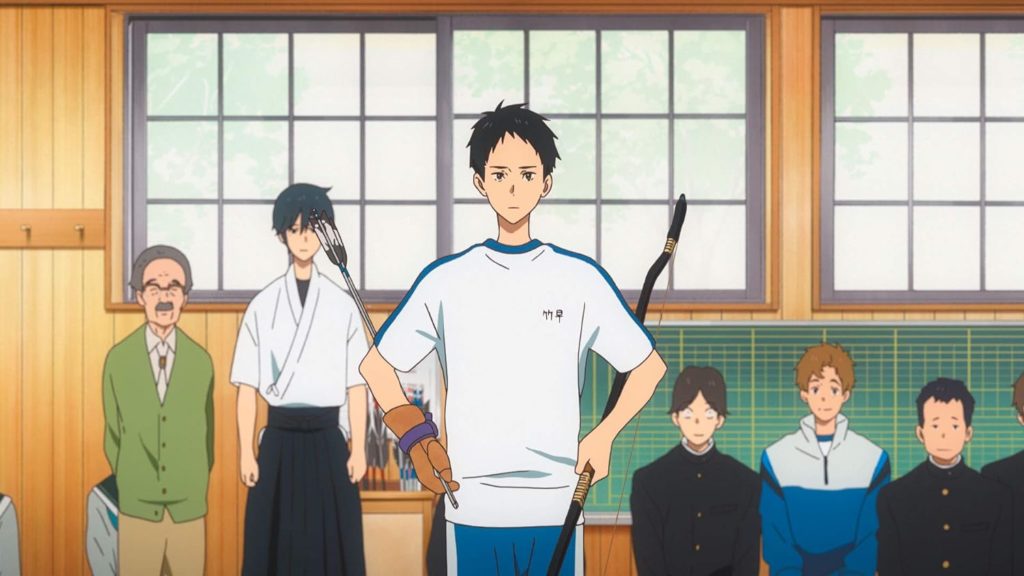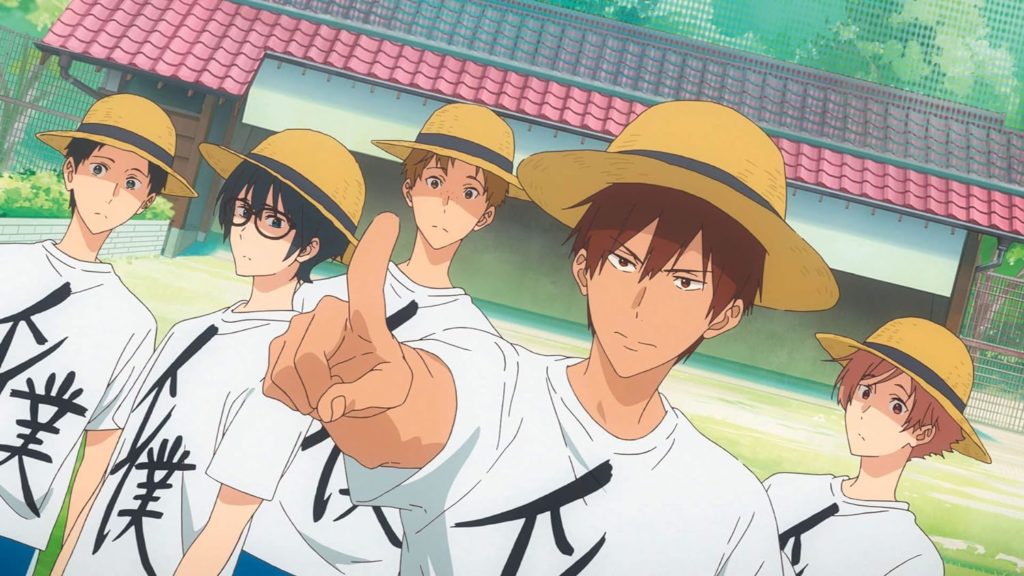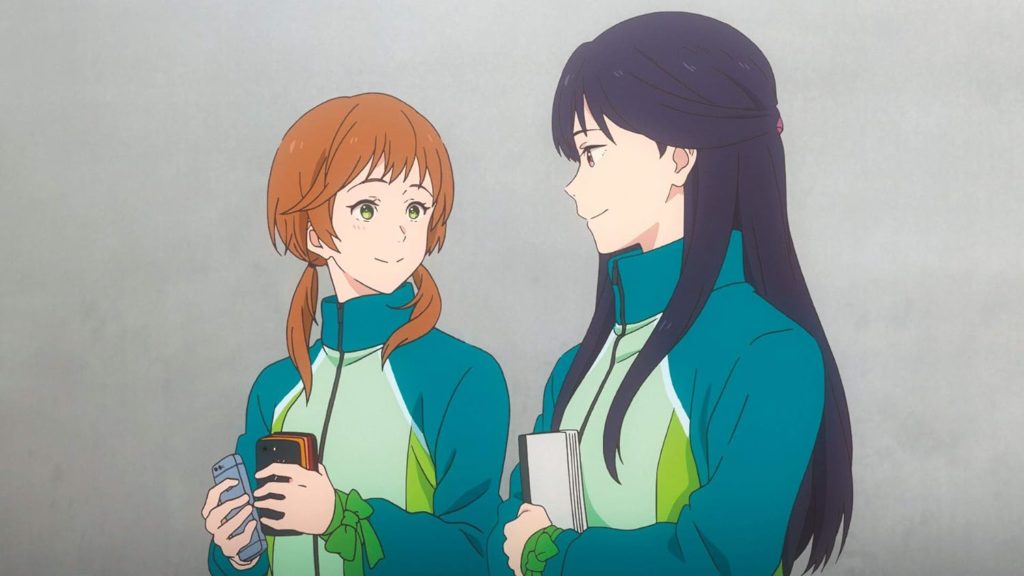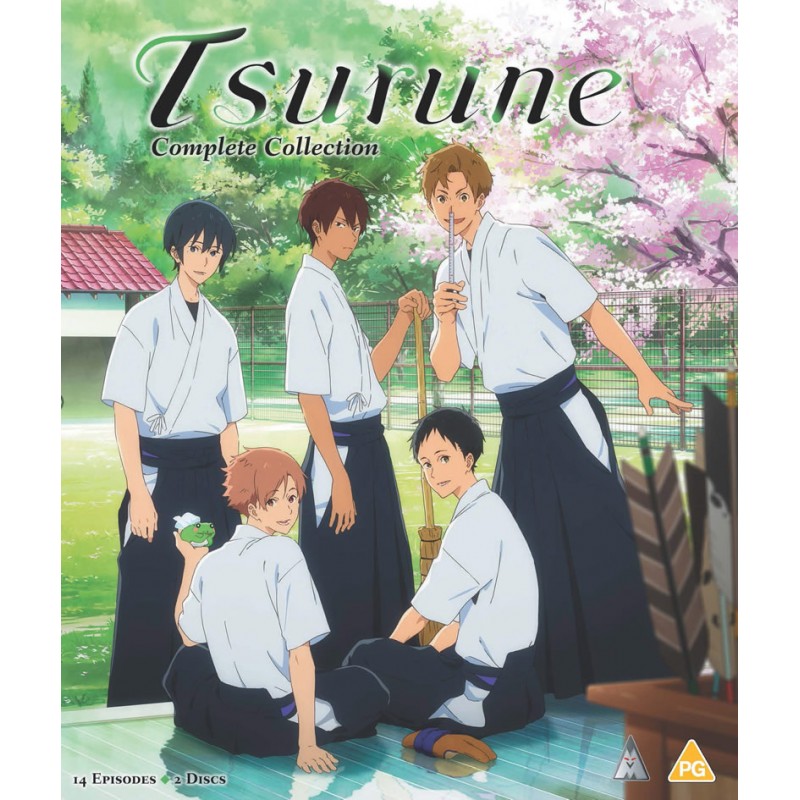Tsurune Collector’s Edition (Season 1 Episodes 1-14) Review
When he was just a young child, Minato Narumiya fell in love with kyudo, the Japanese art of archery, and started to train – until something went very wrong in a middle-school tournament and he was afflicted with target panic. But now he’s at Kazemai High School where the kyudo club is looking for new members; can he be persuaded to put the past behind him and make a fresh start? Going past the local Shinto shrine one moonlit evening, his attention is caught by the very thing that attracted him to kyudo in the first place: ‘tsurune’ – the distinctive sound made when the bowstring hits the bow after loosing an arrow. Curiosity leads him inside where he sees a young man in full kyudo costume, drawing his bow, aiming and getting a perfect hit in the very centre of the target. The man is shrine priest Masaki Takigawa and, after talking to him (and meeting Masa’s tame snowy owl Fu) Minato begins to feel that he might be able to conquer his target panic and find once more the passion for kyudo that he’s lost. And when Tommy-sensei (the club leader) invites Masa (Masaki, the shrine priest) to act as coach in his stead (he’s hurt his back) everything begins to look up for Minato.

The four other boys in the club are Minato’s childhood friend, Seiya, Ryouhei, another childhood friend and two cousins: the relentlessly cheery Nanao (who sees himself as something of a girl-magnet) and Kaito (Ka-chan) who’s tsundere to a fault and always aggressively on the defensive. Minato’s first kyudo friend, Shuu, however, is now attending the prestigious Kirisaki High School which boasts a bigger and better resourced kyudo club – and it’s not long before the two school teams find themselves competing in a local contest. Identical twins Manji and Senichi Sugawara at Kirisaki have no qualms about winding up the prickly Kaito at every opportunity and take malevolent pleasure in reminding the Kazemai archers that it’ll be really difficult to beat their team (Shuu has become a gifted archer) and advance to the prefectural tournament.
The series takes us through the club members’ everyday lives as they work hard to improve their archery, focusing on Minato’s struggles to overcome his target panic. It’s not surprising in some ways that the quiet, earnest boy has developed this problem as he’s still recovering mentally (and physically) from a road accident that robbed him of his mother. As it was his mother who first took him to see an archery contest, it’s something of a complex situation to unwind, but the series shows him gradually coming to terms with his issues and finding again the love of kyudo that has eluded him.

The series is rooted in the day-by-day slice-of-life genre; the atmosphere of the small town and the young people who are growing up there will resonate with many, even if they didn’t go to high school in Japan. On the surface, Tsurune might appear slow-moving and lacking in high stakes drama – but because of the interesting and relatable way the characters are developed, it’s quietly compulsive watching. By the tense last episodes (except for the fun OVA #14 which is something else!) you’ll be rooting for everything to go well for Kazemai High in the final prefectural tournament after all their ups and downs.
When Tsurune first streamed in 2018, what stood out was the same qualities of naturalness and freshness of vision that made Kyoto Animation’s earlier series K-ON! (2009+) and Sound! Euphonium (2015+) so watchable and addictive. Instead of a group of young hopeful female musicians, the focus shifts to kyudo and the series is based on the award-winning novel by Kotoko Ayano (not currently available in translation). This time, although the three girl archers at Kazemai High play an important role in the proceedings, it’s all about the boys, harking back (although it’s a very different kind of story) to Free!, another of KyoAni’s tremendous successes.

As with so many Kyoto Animation series, Tsurune is a genuine pleasure to watch, from the magical moonlit scene at the shrine dojo (with cherry blossoms) in Episode 1. Directed by Takuya Yamamura with skill and sensitivity, from the moment we see a scatter of fresh green leaves (not dry autumn leaves) blowing across the screen in the OP “Naru” by Luck Life, the viewer understands instinctively the symbolism employed. The attention paid to animating the archery scenes brings the show to vivid life, especially when an archer lets loose an arrow. The symbolism of the scattering green leaves combined with the enhanced sound of the resonating bowstring as the arrow powers toward the target is highly effective.
The musical score, by (then) relatively new composer Harumi Fuuki is also another bonus as her choice of instruments and use of music to enhance the characters’ moods and the action is subtly done – but never overemphasizes or distracts from what’s happening (she’s mostly composing for films at the moment, including The Deer King and Lonely Castle in the Mirror). The OP and ED are excellent too and the animation sequences match the words and music well: the Opening Theme “Naru” cleverly times each member of the team firing an arrow with the first beat of the bar and the bitter-sweet nostalgic Ending Theme: “Orange-iro” (The Color Orange) by ChouCho (who also wrote/performed the Insert song: “Kaze no Solfe”) gives us glimpses of childhood friends Minato, Seiya and Ryouhei as they’re growing up.
Cast-wise, I still prefer the original Japanese cast who are all very convincing in their roles, with special praise for Yuuto Uemura (Atsushi in Bungo Stray Dogs) as Minato and Shintaro Asanuma as Masaki (soon to be heard as panda-loving Warumono-san in the 2024 series Mr. Villain’s Day Off). However, the Sentai US dub (also included) does justice to the drama and praise goes to Bryson Baugus (Shoyo Hinata in Haikyuu!!) as Minato, Gareth West as Seiya and Joe Daniels (Kongming in Ya Boy Kongming!) as Masa, coming into his own when the series takes a look into his troubled motives for taking up archery.
The Collector’s Edition from MVM for Tsurune contains Episodes 1-14 (#14 is an OVA) on two Blu-ray discs; and includes an 88-page booklet and 5 art cards housed in a rigid slipcase. Extras comprise textless OP and ED and Japanese promos. A standard Blu-ray edition will follow in February 2024.

It’s been five years since it first aired but it’s a pleasure to welcome this attractive slice-of-life series to Region 2 at last; Tsurune is something of a slow-burn when it comes to building the tension around the young archers but the last episodes deliver a very satisfying conclusion! I’m very glad to learn that MVM will also be bringing us Season 2: Tsurune: The Linking Shot before too long (and hoping for the compilation 2022 film: Tsurune The Movie: The First Shot).


